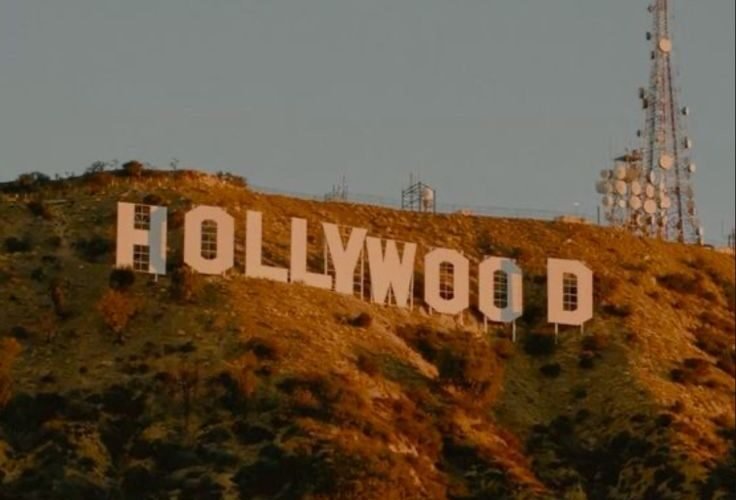Hollywood Sequels Review: Did They Live Up to the Hype?

Hollywood entered 2025 with a strategy built on familiarity. Studios packed the release calendar with sequels, reboots, and spin‑offs. They banked on nostalgia and brand recognition to draw families and fans to theaters. Some sequels earned record numbers, while others fizzled despite heavy marketing. This year revealed the strengths and weaknesses of Hollywood’s reliance on franchise storytelling.
1. Fantastic Four: First Steps – Marvel’s Reboot Gamble
Marvel launched 2025 with Fantastic Four: First Steps, a highly anticipated reboot that aimed to bring the iconic superhero team into the Marvel Cinematic Universe.
- Opening Weekend: $218 million worldwide
- Second Weekend: Sharp 66% drop to $40 million
- Audience Response: CinemaScore A‑, strong opening turnout
The film delivered thrilling action sequences and a grounded origin story that resonated with die‑hard Marvel fans. Critics praised its visuals, dynamic team chemistry, and faithful adaptation of the source material. Families and casual moviegoers also enjoyed the humor and energy.
Despite its strong start, the sequel lost momentum in the second week. Audience curiosity drove the opening weekend, but the story lacked the staying power needed for long‑term box office dominance. Marvel achieved a creative win but fell short of the franchise‑launching juggernaut it envisioned.
Verdict: Lived up to the hype at launch but struggled to maintain it.
2. Captain America: Brave New World – Familiar Hero, Fading Impact
The next major sequel, Captain America: Brave New World, carried the heavy expectations of continuing the Avengers legacy under Sam Wilson’s leadership.
- Worldwide Box Office: $415 million
- Opening Weekend: $100 million
- Second Weekend Drop: 68%
The movie delivered emotional stakes and patriotic flair, with Anthony Mackie stepping into the shield confidently. Action sequences showcased Marvel’s signature cinematic scale. Fans appreciated the return of familiar faces and political intrigue in the plot.
However, the film faced tough competition and fatigue from superhero saturation. Audience interest peaked in the first weekend, then declined rapidly. Families seeking novelty skipped repeat viewings, and younger viewers gravitated toward fresher franchises.
Verdict: Entertaining but failed to maintain momentum, revealing cracks in Marvel’s once‑unshakable formula.
3. Mission: Impossible – The Final Reckoning
Tom Cruise returned for what many believe will serve as Ethan Hunt’s cinematic farewell in Mission: Impossible – The Final Reckoning.
- Worldwide Box Office: $586 million
- Franchise Achievement: Highest opening weekend in series history
Audiences embraced this sequel for its breathtaking stunts, globe‑trotting action, and emotionally satisfying character arcs. Tom Cruise performed high‑risk sequences that fueled word‑of‑mouth buzz. Families with teens and action fans flocked to theaters multiple times to experience the spectacle on the biggest screens possible.
The movie avoided the front‑loaded drop that plagued Marvel’s sequels. Strong storytelling, a tight plot, and high production quality helped sustain box office legs throughout the summer. It stood out as the rare sequel that combined nostalgia with fresh excitement.
Verdict: Fully lived up to the hype, delivering both commercial success and critical praise.
4. Den of Thieves 2: Pantera – Modest Heist, Modest Returns
The mid‑budget action sequel Den of Thieves 2: Pantera continued the story of the gritty heist crew led by Gerard Butler.
- Budget: $40 million
- Worldwide Box Office: $57.3 million
- Audience Score: B+
The movie entertained its core fan base with sharp shootouts, tactical sequences, and tense heist scenarios. Director Christian Gudegast leaned into realism and high‑intensity urban chases that resonated with action enthusiasts.
Despite its strengths, the sequel never broke into mainstream attention. Families largely skipped it due to its R‑rating and complex plotlines. Marketing stayed limited, and word‑of‑mouth remained lukewarm outside the first film’s fan circle.
Verdict: A serviceable sequel that satisfied fans but failed to elevate the franchise.
5. M3GAN 2.0 – A Lesson in Sequel Miscalculation
Horror sequels often rely on consistency in tone and character. M3GAN 2.0 broke that rule.
The 2023 original thrived on creepy humor and viral moments featuring the killer AI doll. The 2025 follow‑up shifted focus toward action and self‑aware comedy, straying from the suspense that made the first film iconic.
- Box Office: Significantly below projections
- Audience Feedback: Fans disliked the tonal shift
- Critical Response: Noted creative missteps and lack of tension
Families with older kids who expected fun scares left disappointed. The studio misjudged its audience and over‑engineered a character who thrived in simplicity. The sequel’s underperformance sent a clear message: franchises need to respect their core appeal.
Verdict: Failed to live up to the hype and highlighted the risks of over‑tweaking a successful formula.
Industry Trends in 2025 Sequels
Hollywood’s obsession with sequels produced clear patterns:
- Opening Weekend Front‑Loading
Franchise familiarity attracted huge first‑week audiences, but second‑week drop‑offs revealed audience fatigue. Marvel sequels exemplified this trend. - Staying Power Requires Storytelling
Mission: Impossible succeeded because it paired action spectacle with character depth. Audiences rewarded a narrative that felt conclusive and engaging. - Mid‑Budget Sequels Struggle for Visibility
Films like Den of Thieves 2 earned modest returns but could not compete against blockbuster marketing campaigns. - Horror Needs Consistency
Fans of M3GAN expected suspense and dark humor. When studios shifted tone for mass appeal, audiences disengaged. - Franchise Dependence Limits Innovation
While sequels fueled overall box office growth, original titles like Sinners and F1: The Movie surprised analysts with strong earnings, proving that creativity can still cut through the noise.
Final Analysis: Hits, Misses, and Lessons
Hollywood’s 2025 sequel strategy produced a mixed bag:
- Exceeded Expectations: Mission: Impossible – The Final Reckoning
- Strong but Unsustained: Fantastic Four: First Steps, Captain America: Brave New World
- Modest Performer: Den of Thieves 2: Pantera
- Disappointment: M3GAN 2.0
Studios enjoyed high initial earnings but faced increasing audience scrutiny. Viewers want sequels that respect legacy while delivering fresh storytelling. Marketing alone no longer ensures long‑term success.
As Hollywood moves into 2026, studios face a critical choice: continue betting on familiar IP or invest in original stories that can become tomorrow’s franchises. The results of 2025 suggest that while hype sells tickets, only quality sustains them.













